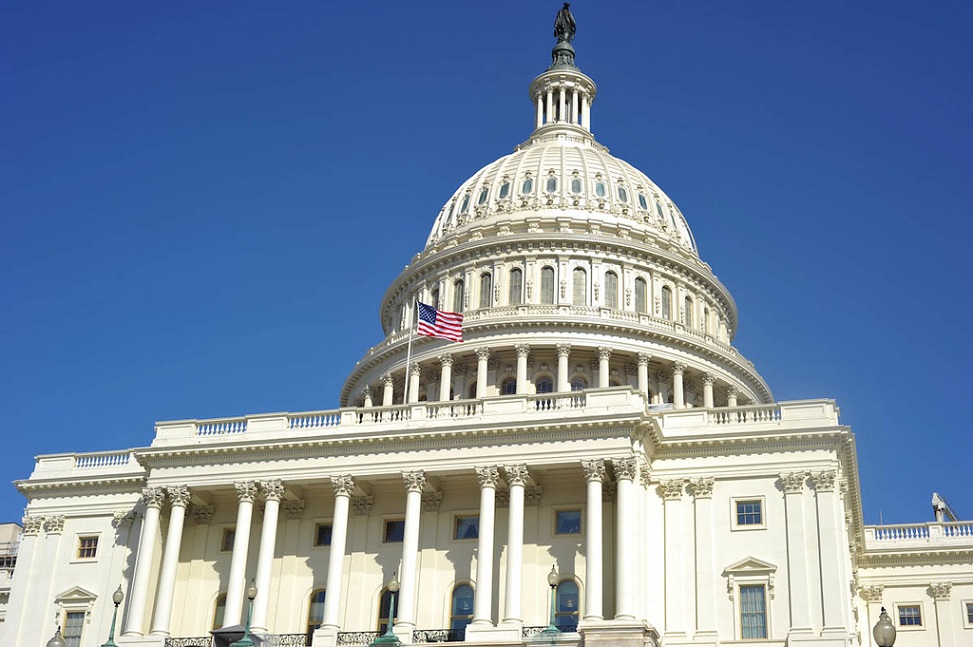Analysis: CRE and Washington’s New Agenda
Paul Fiorilla of Yardi Matrix on why the new balance of power in Congress presents a complex outlook for commercial real estate.

Paul Fiorilla, Director of Research, Yardi Matrix
The upset wins of two Democrats in the Jan. 5 runoff elections for Georgia’s U.S. Senate seats carries far-reaching implications, not least for economic policy and the commercial real estate sector. Though slim, the new Democratic majorities in both houses of Congress considerably boost the chances that President-elect Joe Biden can enact at least part of his ambitious agenda.
In particular, Democrats now have a much better shot at gaining approval for trillions of dollars of federal spending and a host of tax and regulatory changes that would be non-starters if Mitch McConnell had remained in control of the Senate. Instead, incoming Majority Leader Chuck Schumer and House Speaker Nancy Pelosi will decide what comes up for a vote.
For commercial real estate, the outcome of the election is a mixed policy bag. The industry has been lobbying hard for increased emergency aid to help multifamily residents and commercial properties that have lost income due to the pandemic. While that will provide a short-term shot in the arm, there are also concerns that the Biden administration’s tax and regulatory changes might be less helpful to the industry in the long run.
Among Biden’s first priorities will be to address the nation’s broken immigration policy, to increase the minimum wage and pass more COVID-19 emergency aid. Beyond that, Democrats will address the need for affordable housing, and take up an infrastructure bill they have sought for years. Slightly longer- term, Biden and his administration will likely address taxes, reform of Fannie Mae and Freddie Mac, and regulatory changes that include more scrutiny of non-bank lenders that have proliferated in recent years.
All in all, the agenda is dizzying in its scope. However, the Democrats’ majority is small; when Senators-elect Raphael Warnock and Jon Ossoff are sworn in this month, the Senate will be tied 50-50. Only Vice President-elect Kamala Harris’ tie-breaking vote provides Democrats with an edge. That means the scope of some legislation may be scaled back and enactment may require a fair bit of parliamentary maneuvering. Even so, there is an enormous difference between what’s likely ahead and what would have happened had McConnell had remained in charge of the Senate.
Pandemic Relief, Housing Help
Many major issues to be addressed in the first few months of the new administration will have an impact on commercial real estate, be it direct or indirect. Additional pandemic relief to supplement the $900 billion package enacted in December is one item with a direct impact. Democrats had sought a much larger bill and are now in position to pass additional aid that could include an increase in direct payments to individuals and an extension of unemployment payments.
Before the December bill was passed, Democrats tried to get $2,000 payments for individuals, but they settled for $600 after negotiations with Senate Republicans. Now they could pass a bill with an extra $1,400 payment for each person.
Democrats also sought $600 per week in federal unemployment benefits, but that was negotiated down to $300, and payments will expire in mid-March. Democrats will likely try to increase weekly benefits to $600 and extend the payment period. The $600 per week benefit, which was part of the first aid bill in March 2020, expired last July. House Democrats voted last fall to extend the $600 weekly aid but negotiations with McConnell for a Senate version broke down. Now they can go ahead without the Kentucky Senator’s assent.
Extra unemployment aid has been a key part of enabling multifamily residents to keep up with rent payments. Data compiled by the National Multifamily Housing Council found rent payments in professionally managed apartments to be only 2 to 3 percentage points behind previous years, but that number is worsening as unemployment remains high and benefits run out. Moody’s Analytics calculated that tenants owed a cumulative $70 billion in back rent by the end of 2020 alone. The recent emergency aid package includes a $25 billion fund for renter relief, but that isn’t nearly enough to make apartment owners whole.
The apartment industry could also benefit from Biden’s housing plan. During the campaign, the president-elect proposed a 10-year, $640 billion effort to increase affordable housing. The plan includes provisions to boost supply of affordable units through tax incentives; the use of federal aid to incentivize redevelopment of blighted properties; and the removal of NIMBY policies that limit apartment development. “We need the leverage of the federal purse to drive communities to get out of the way of housing development,” said Kevin Donnelly, vice president of government affairs at NMHC.
Indirect Impacts

Photo courtesy of Ian Lee via Flickr
Biden’s agenda includes issues that will impact real estate more indirectly, such as immigration, infrastructure, and the minimum wage. Immigration priorities include legislative reform, securing borders and tackling the root causes of migration from Central America. Immigration to the U.S. has waned by about half during the Trump years, dropping from 1.2 million in 2016 to 600,000 in 2020, according to Arlington, Va.-based National Foundation for American Policy.
That trend is among the causes of population decline in Gateway metros, which have relied on foreign immigrants to make up for net domestic out-migration. Multifamily occupancy and rent growth have plummeted in Gateway metros as outmigration has escalated during the pandemic. New immigration policies could also benefit the student housing industry by increasing the number of foreign students, which decreased sharply in 2020.
Democrats are likely to push for an infrastructure plan in line with a $1.5 trillion package passed last year by the House for roads and bridges, housing, clean water, renewable energy sources, broadband and more. The package could create construction jobs and boost economic activity in the long run. For example, a Democratic president and like-minded Democratic governors in New Jersey and New York could attempt to revive the Gateway tunnel project. That would facilitate movement between the two states and help stem the loss of population by easing the commute into Manhattan.
The Democratic agenda involves spending huge sums of money, which may not have been possible before COVID-19, or with a Republican-controlled Senate. The political calculus for interventionist government has evolved over the last year due to the success of the 2020 stimulus package in keeping the economy afloat even as many regions and industry were shut down, the fact that interest rates remained low even as deficits skyrocketed, and the emerging economic consensus among policymakers such as Federal Reserve Chair Jay Powell that short-term increases to the federal deficit are acceptable during a time of crisis.
Some economists, such as Moody’s Analytics chief economist Mark Zandi, predict that inflation could rise above the Federal Reserve’s 2 percent target rate as a result of the new spending programs and pent-up post-pandemic demand for consumer goods and travel. But that’s a problem for another time, as the economy is unlikely to get back to pre-COVID-19 job levels until 2022 or 2023.
Tax, Regulatory Agenda
Some of Biden’s agenda promises to be unpopular in the commercial real estate industry. One area is taxes, where there are concerns that in order to raise revenue Democrats will eliminate the 1031 exchange, which allows property owners to defer capital gains on sales if they invest proceeds in a like-kind property.
Another potential change is the restoration of the state and local income tax deduction, which allows homeowners in high-tax states to itemize state and local taxes. The SALT tax deduction was limited to $10,000 in the 2017 tax reform and has contributed to the exodus of residents from primarily Democratic-voting states whose taxes were effectively increased. Democrats in those states campaigned on restoring the SALT tax deduction, likely making it a priority for the new Congress.
Separate potential worries are eviction bans and rent control, which are items more likely to show up in Democratic-run jurisdictions. The Trump administration imposed a national eviction moratorium on apartments that is in effect through Jan. 31. The moratorium is opposed by the industry because it doesn’t solve the root cause and makes it more difficult to evict residents for other reasons.
Industry groups such as the Washington, D.C.-based CRE Finance Council are also closely watching what will happen in the regulatory arena. President Trump’s appointees made it a priority to cut regulatory burdens on industry where they could, and some of those areas may be reversed or tightened. One example is the non-bank lending segment, which is under the jurisdiction of the Financial Stability Oversight Council.
Incoming Treasury Secretary Janet Yellen has talked about the systemic risks posed by unregulated non-bank lenders, which have increased market share in the commercial mortgage industry over the last decade. “We need to change the structure of FSOC and build up its powers to be able to deal more effectively with all of the problems that exist in the shadow banking sector,” Yellen said in a recent speech, according to an article in Politico.
Although no specific proposals have been made yet about regulating the sector, trade groups will monitor the situation closely. “It’s just too soon to tell,” said Justin Ailes, managing director of government relations for CREFC.







You must be logged in to post a comment.